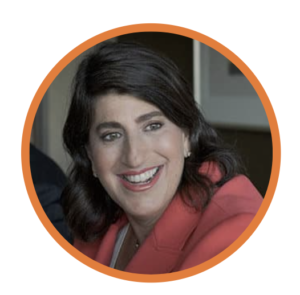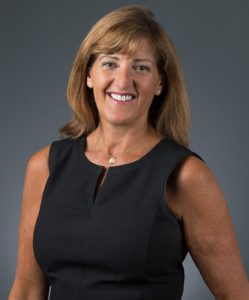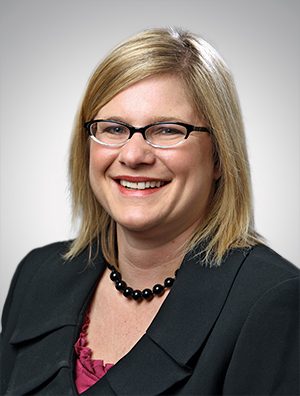We are thrilled to have an impressive line-up of prominent leaders, influencers and change-makers speaking at our 2021 Virtual Annual Conference on November 3. We will be introducing these dynamic and engaging speakers here on our blog. We asked our speakers to answer a few questions about themselves and hope you find the answers as fascinating as we do!
This week’s “Getting To Know Our Conference Speakers” post highlights our 2021 Keynote speaker, Lara Abrash, Chair & CEO of Deloitte & Touche LLP. We really appreciate Lara taking time out of her busy schedule to share some intriguing thoughts about her approach to her career and life. Read on to learn more about this amazing leader’s inspiration, goals and personal mantra.
 Diversity & Flexibility Alliance: What is the most meaningful advice you have received? Who has had the most influence on your career?
Diversity & Flexibility Alliance: What is the most meaningful advice you have received? Who has had the most influence on your career?
Lara Abrash: My mother raised me to believe I could be anything I wanted to be. When my three brothers and I were older, she pursued her dreams and went back to college in her forties to earn her degree. My mother was my first role model—and a very powerful one!
My mother taught me three main things that have stuck with me throughout my career.
- Dream big and pursue your goals with passion. My mother told me dreaming isn’t enough – a goal isn’t a goal until you say it out loud. She encouraged me to claim what I do and share how I am adding value.
- Building relationships and connecting with others. Each person has unique strengths —whether it’s a unique way of communicating and leading, or collaborating, teaming, and lifting others into the spotlight. Through sharing stories and being vulnerable, women and men can create these valuable connections and build strong relationships.
- The importance of well-being and self-care. My mother has always reminded me that I cannot take care of other people unless I take care of myself first. Well-being and self-care are essential to all of us. For me, it’s finding time to do what energizes me, whether it’s making it home from a business trip in time to play in a softball game or having dinner with my family and my mother. I make these things a priority and make myself a priority, so I have the energy to take care of my clients, my colleagues, and my loved ones.
DFA: What do you know now that you wish you knew then?
LA: I have learned that a strong work ethic and determination are vital but relationships – deep, trusting relationships – are essential and will take you further in your career than any technical knowledge.
DFA: How do you pay it forward or inspire others?
LA: People give me energy and fill my well-being tank. The people I work with on a daily basis are the reason I am still here at Deloitte. I have immense joy when the people I’ve mentored or coached throughout the years have succeeded. My current chief of staff, Amanda Di Salvo, is one of those people. She recently was promoted to managing director within our firm – a huge accomplishment. Her resilience, hard work, and generosity have driven her success and to be a part of her career journey is something very special. I believe being there and really listening is such a vital part of being influential in someone’s career…and life.
DFA: What can we be doing to create more inclusive organizations?
LA: I believe women have superpowers. In my recent LinkedIn long form blog post I talked about the three powerful values that have emerged as the centerpiece of modern leadership: Be vulnerable. Demonstrate empathy. Act compassionately.
While these three powerful values are often inherent in women leaders, they are essential values for all leaders so that we can learn from one another and draw upon the power of the diversity of our organizations, emerging stronger, more connected, and healthier—physically and emotionally.
It’s time for us to adapt. It’s time for leaders to focus on what’s most important now to those who look to us for inspiration, mentorship, and direction. It’s time to create an environment that inspires and empowers those around us to tap into the truly diverse, human capabilities that will be the foundation of differentiated organizations of the future.
DFA: What book is on your nightstand? Or what TV shows got you through the lock down?
LA: Ever since I was a young girl, I have whole-heartedly loved absorbing information. I constantly want to better myself and learn. I seek information in a variety of different channels. Most recently, Michelle Obama’s Becoming resonated with me. Regardless of your political views, her commentary on confidence, marriage, race, and womanhood spoke to me. Specifically, her quote, “If you don’t get out there and define yourself, you’ll be quickly and inaccurately defined by others.” Defining my vision and having the confidence to speak up is one of the main factors that led me to where I am today.
DFA: What’s your personal mantra?
LA: I’ve lived this quote personally: “It’s not about perfection, it’s about progress.” My life has been a series of different juggling acts – from sports, to school, to my family and friends, and my professional life – which fulfill my desire to keep pushing myself. I learned early on that showing up, taking calculated risks, and putting your best foot forward is what truly matters.
Don’t miss Lara Abrash and our other 2021 Speakers on
Wednesday, November 3.

 Diversity & Flexibility Alliance: How have you made flexibility a priority and a success with your schedule? How has the firm and/or your clients contributed to this?
Diversity & Flexibility Alliance: How have you made flexibility a priority and a success with your schedule? How has the firm and/or your clients contributed to this? Diversity & Flexibility Alliance: How have you made flexibility a priority and a success with your schedule? How have the firm and/or your clients contributed to this?
Diversity & Flexibility Alliance: How have you made flexibility a priority and a success with your schedule? How have the firm and/or your clients contributed to this?
